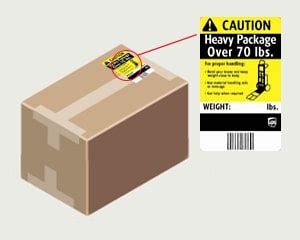How to Ship an Item That Weighs 100 Pounds: A Comprehensive Guide
Shipping a 100-pound item can seem daunting, but with the right planning and approach, it's entirely manageable. This guide breaks down the process, helping you choose the best shipping method, package your item securely, and avoid costly mistakes.
1. Determine Your Shipping Needs:
Before you even think about boxes, you need to understand your specific requirements. Consider these factors:
- Destination: Shipping domestically within the US will differ greatly from international shipping. International shipments often involve more paperwork and potentially higher costs.
- Delivery Speed: Do you need your item there overnight, in a few days, or is a slower, more economical service acceptable? This will heavily influence your shipping choices.
- Fragility: Is your 100-pound item fragile? If so, extra padding and specialized handling will be necessary, adding to the cost.
- Insurance: Consider insuring your shipment against loss or damage. This is especially important for high-value or fragile items. The cost of insurance will vary based on the value of the item and the shipping method.
2. Choosing the Right Shipping Carrier:
Several carriers handle heavier items, each with its own pros and cons:
- Freight Shipping: For items weighing over 150 pounds, freight shipping is generally the most cost-effective option. Companies like FedEx Freight, UPS Freight, and specialized trucking companies handle these shipments. Note: Freight shipping often requires the recipient to have a loading dock or forklift for unloading.
- LTL (Less-Than-Truckload) Shipping: This is suitable for heavier items that don't require a full truckload. LTL shipping is usually more affordable than full truckload shipping.
- Package Carriers (UPS & FedEx): While UPS and FedEx handle heavier packages, there are often size and weight restrictions. You might find it more economical to use freight shipping for a 100-pound item, especially if it's oversized. Always check their size and weight limitations beforehand.
Pro Tip: Get quotes from multiple carriers to compare pricing and services. Don't just focus on the base price; factor in any additional fees for oversized packages, handling, insurance, etc.
3. Packaging Your 100-Pound Item:
Proper packaging is crucial for preventing damage during transit.
- Sturdy Packaging: Use a heavy-duty box or crate designed to withstand the rigors of shipping. The box should be significantly larger than the item to allow for ample padding.
- Adequate Padding: Use plenty of cushioning material such as bubble wrap, packing peanuts, foam, or air pillows. Ensure the item is completely surrounded and cannot shift during transit. Strong padding is especially important for fragile items.
- Securely Close the Box: Use strong tape, reinforced in an "H" pattern, to secure the box thoroughly. This prevents the box from breaking open during handling.
- Clear Labeling: Clearly label the box with the recipient's address, your return address, and any handling instructions (e.g., "Fragile," "Handle with Care").
4. Preparing for Shipping:
- Weight and Dimensions: Accurately measure and weigh your package. This information is crucial for obtaining accurate shipping quotes and ensuring the package complies with carrier regulations.
- Documentation: Gather any necessary documentation, including commercial invoices, certificates of origin (for international shipments), and any other required paperwork.
- Scheduling Pickup: Schedule a pickup with your chosen carrier. This will usually involve providing them with the package details and your preferred pickup time.
5. Tracking Your Shipment:
Once your item is shipped, obtain the tracking number from your carrier. Use this to monitor your shipment's progress and ensure it arrives safely at its destination.
Shipping a 100-pound item requires careful planning and execution. By following these steps, you can ensure a smooth and successful shipping experience. Remember to always prioritize safe packaging and choose the right carrier for your specific needs.
